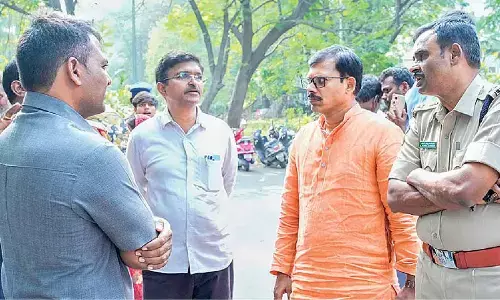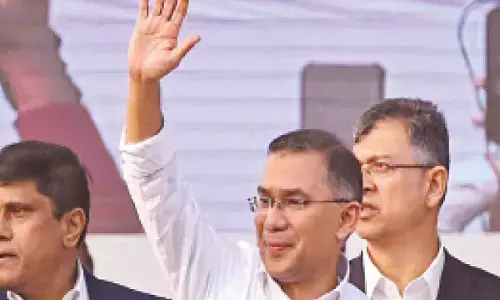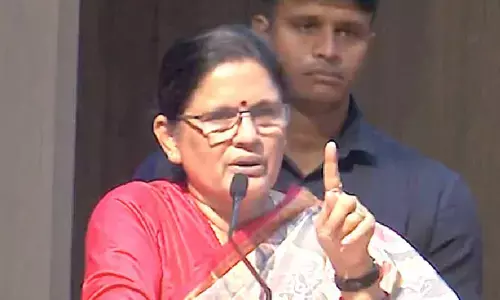JUDAs are a misconceived lot

With strikes by junior doctors in government hospitals becoming an annual affair and the media highlighting the services affected in those hospitals, the public seems to be increasingly developing a rather negative opinion about them.
 With strikes by junior doctors in government hospitals becoming an annual affair and the media highlighting the services affected in those hospitals, the public seems to be increasingly developing a rather negative opinion about them. I too was a junior doctor once but unlike them, I am neither a politician nor an administrator and hence can clarify some of the misconceptions about them.
With strikes by junior doctors in government hospitals becoming an annual affair and the media highlighting the services affected in those hospitals, the public seems to be increasingly developing a rather negative opinion about them. I too was a junior doctor once but unlike them, I am neither a politician nor an administrator and hence can clarify some of the misconceptions about them.
Junior doctors or Judas as they are widely referred to, are placed lowest in the hierarchy of medical professionals who are placed well below professors, associate professors, assistant professors, senior residents and tutors. As a matter of fact, they are still students who have not yet received their degrees.
Although their services constitute the more visible aspect of patient care system in hospitals, they are technically purely supportive, ancillary and subordinate. In their absence, their services can very well be covered by associate and assistant professors, tutors and nursing and paramedical staff. Many serious and terminally ill patients are admitted in government teaching hospitals and deaths, even if undesirable, do occur even if the best care is offered to these patients.
To attribute all these deaths to the strikes by junior doctors is unfair on the part of anyone making these accusations. This clarification can be best made by many senior doctors under whose supervision the junior doctors work. But sadly, they will never accept it because these government servants dare not speak anything that could annoy the government - understandable.
Another often repeated but ridiculous claim is the amount of money that is spent on each medical student by the government. I often wonder how they arrive at that figure which different people claim to be between Rs 30 lakh and Rs 1 crore. I presume it is by dividing the total amount spent on staff salaries and patient care by the number of medical students admitted every year. Providing tertiary level of free patient care to the poor and underprivileged is the responsibility of any tax collecting government.
Tertiary level hospitals such as those set up at Vizag, Guntur, Vijayawada, Kakinada, Tirupati, Kurnool, Hyderabad and Warangal, are essentially referral centres for patients requiring advanced care in primary health centres, taluk and district hospitals. No wonder these tertiary referral hospitals require a large staff, considerable bed strength, advanced and expensive diagnostic and therapeutic facilities to cater to patient care, irrespective of whether medical college and medical students are present or not.
To attribute all this fundamental expenditure to medical education is bizarre indeed. Moreover, medical students in government medical colleges are selected through a tough, stressful and exhausting selection procedure that is open to all and not as per the whims and fancies of anybody to comment, “You are studying with public money. So you have to keep mum.” It will be as outlandish and outrageous as a rich taxpayer asking a poor non tax payer to work for him free as he is paying tax for the latter’s subsidies!

With regard to the controversial ‘compulsory one year rural service’, the government and junior doctors have their own points of view which address genuine concerns from each side.
From the government’s perspective, compulsory rural service will ensure that a trained medical student is less likely to abscond from duties in rural areas as he or she will be bound by the requirement to complete that period in order to obtain the degree. Moreover, it will be cheaper labour compared to posting permanent doctors, no less an important consideration for the government.
From the perspective of junior doctors, they consider that rural service will an academic suicide for them in a very crucial phase of their career – they will not be able to render the best therapeutic services that they have learnt from their text books and teachers in an atmosphere of inadequate diagnostic facilities and limited availability of medicines. Rural service will also hamper their preparation for entrance exams for higher studies, which will be another mind wrenching, extremely stressful effort for them.
Comparing themselves to their engineering counterparts who finish their studies much earlier, getting jobs in cities or overseas and earning much more at an earlier age is inevitable and adds to the pain. On the other side of the coin, the junior doctors will have the opportunity to work in rural India and learn new and wise things in life from their interactions with people and local politicians. Some leaders of the JUDA have spoken on TV that they are willing to work in rural areas if they are posted on permanent basis.
Withholding the issue of degree certificates until the completion of rural service is a concern for the junior doctors who claim that it is under purview of the Medical Council of India (MCI) and not the State government.
Junior doctors need to be viewed as medical students- intelligent but stressed out (from their academic curriculum), young but unexposed to the society and so impatient and instinctive. Their genuine concerns need to be addressed before the government takes a final decision.



















